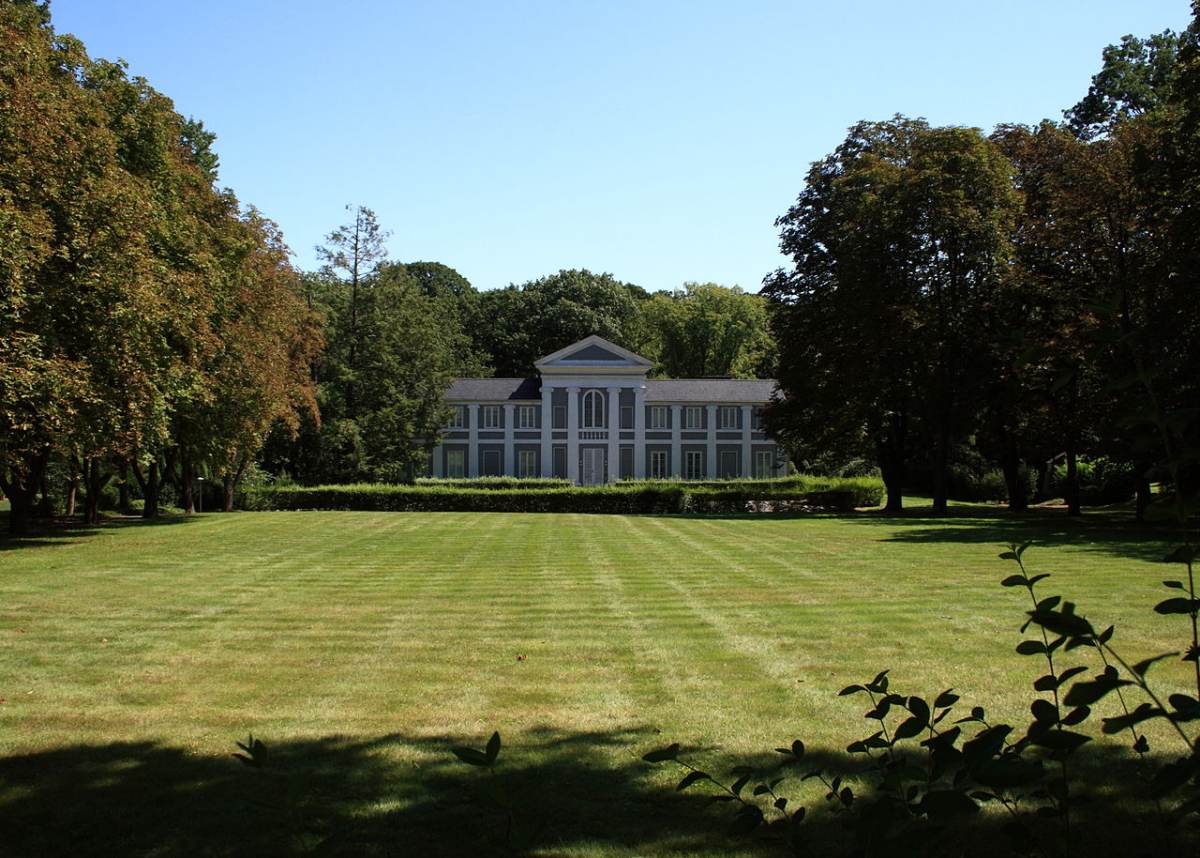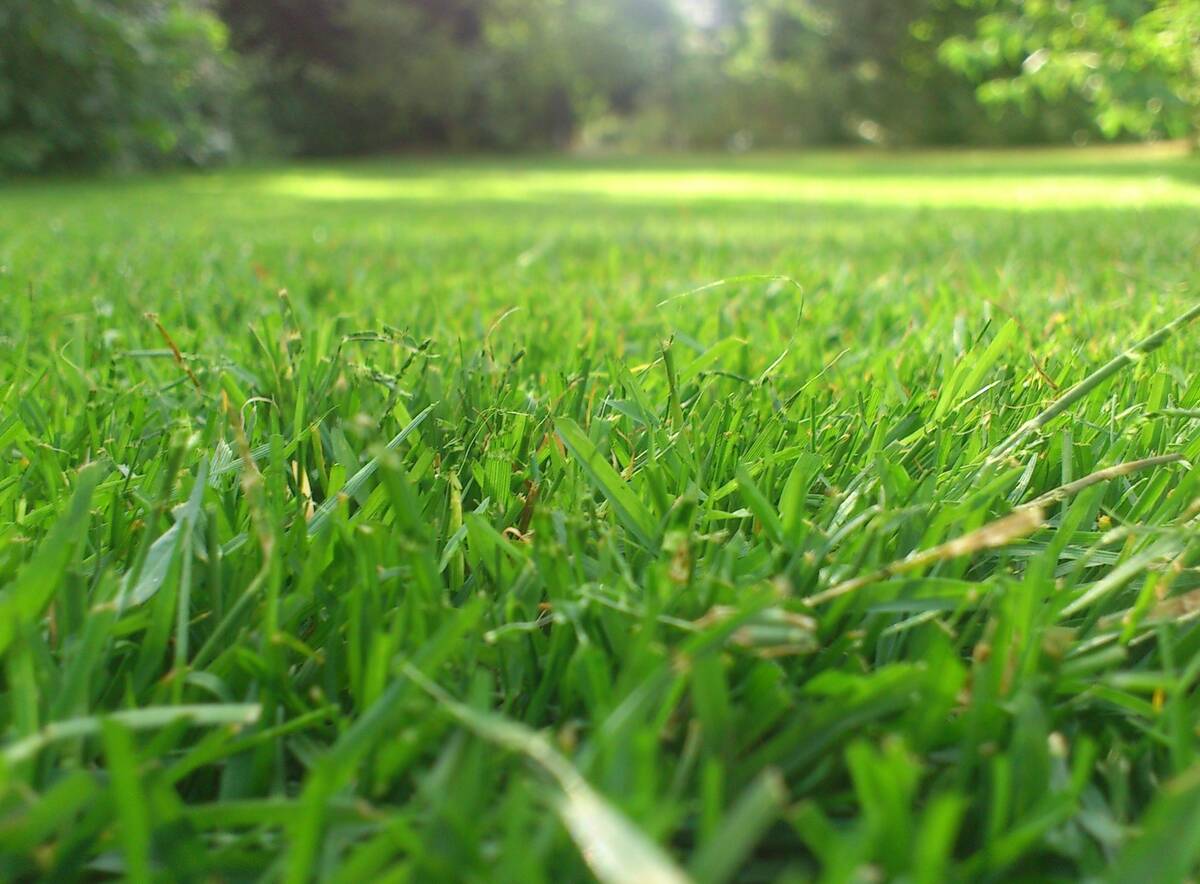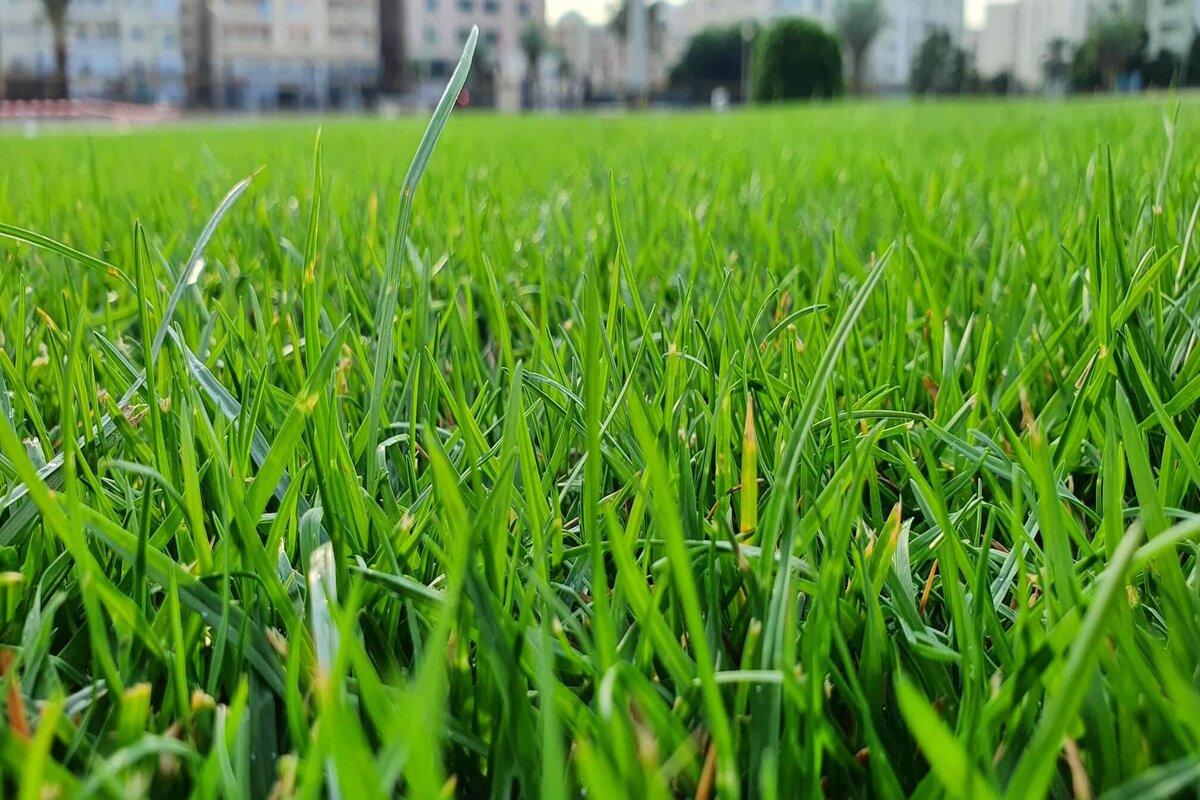
Connecticut’s diverse climate and distinctive soil composition provide both obstacles and possibilities for homeowners seeking to maintain a lush, healthy lawn. In this article, we’ll take a look at the perfect lawn care schedule for Connecticut to keep your grass as healthy as possible all year long.
So put on your yard work shoes, polish off your green thumb, and let’s go on a quest to create the ideal Connecticut lawn!
Summers in Connecticut are hot but last only a few months, while winters are long and harsh. This is why cool-season grasses grow well here. Follow the cool-season lawn care calendar below to have a fresh-looking lawn all year round in Connecticut.
Early Spring Lawn Care (March – Mid-April)
As the grip of winter loosens, it’s time to focus on our beloved lawns and give them the attention they deserve. The early spring season, from March to April, is crucial for laying the groundwork for a vibrant and healthy lawn all year in Connecticut.
Clear the Debris
Say goodbye to winter debris. Take a walk around your yard and pick up any fallen leaves, twigs, or other debris that may have gathered during the snowy months. It’s like giving your lawn a new lease of life – an empty canvas to work with!
Test Your Soil

Soil testing is an essential step in determining what your soil needs next. Collect soil samples from several locations on your lawn and submit them to UConn’s Soil Nutrient Analysis Laboratory. They’ll give you helpful information about the pH of your soil and any nutritional deficits.
You can also test your soil with home kits, although the results won’t be as detailed and accurate.
Shop Home Soil Test Kits:
The information from a soil test allows you to make soil amendments to meet your Connecticut lawn’s specific needs, including choosing the right lawn fertilizer.
Apply Fertilizer
The best time to apply fertilizer on your cool-season Connecticut lawn is in the fall. But if your soil test suggests two applications of fertilizer per year, one of them can be in spring when the grass greens up after the last frost.
Late Spring Lawn Care (Mid-April – May)
Keep on reading to learn how to maintain your lawn in late spring.
Mow Your Lawn
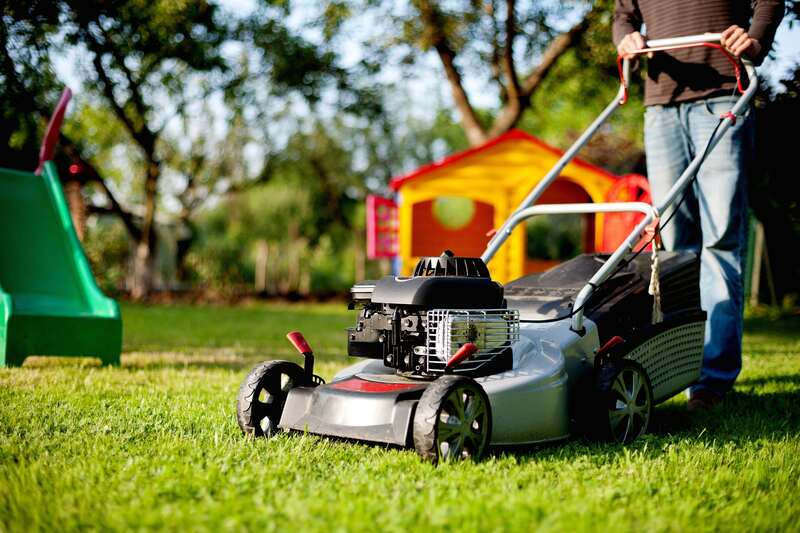
Now that your grass is growing actively, it’s the right time to start mowing your lawn regularly. Start with an increased mower height and leave the grass to grow longer to support deep root growth. Deep roots will help your cool-season lawn survive the heat of summer.
Time to Hydrate
Don’t forget about the water! As the temperature warms, it’s critical to keep your lawn hydrated. Proper lawn irrigation is essential for good root growth. Aim for 1 to 1.5 inches of water every week.
Instead of frequent, shallow watering, give your lawn a deep drink at long intervals. This will stimulate your grass to grow deep roots, making it more drought-resistant.
Always water your lawn before 10 a.m. so the water has time to soak into the soil since evaporation is reduced and winds are calmer in the early morning. The risk of disease development also reduces when the grass is watered early in the morning rather than in the evening.
Weed Control
Late spring is the perfect time for those troublesome summer weeds to appear. Get out there and show them who’s in charge! Roll up your sleeves, get down on your knees, and pluck those weeds out by the root before they can take over your lawn.
You can also use pre-emergent herbicides to prevent weeds even before their occurrence. Apply a pre-emergent herbicide when soil temperatures have been around 55 degrees for at least 48 hours. If you want an organic approach, consider using vinegar as a weed killer.
Keep Those Pesky Pests at Bay
Late spring is party time not just for weeds but also for other undesirable guests – insect pests. Watch for creatures that might wreak havoc on your lawn, such as lawn grubs. If you suspect an infestation, it’s time to call in the big guns.
Choose suitable insecticides and carefully follow the directions. But keep in mind that prevention is vital! Follow our Guide to DIY Pest Control to prevent or eliminate the most common lawn pests in Connecticut.
Summer Lawn Care (June – August)
Summertime in Connecticut means sunlight, barbecues, and, of course, maintaining our beloved lawns. In summer, lawns are subjected to heat and humidity. Your cool-season grass may go dormant during the summer. Don’t be alarmed; this is a natural survival mechanism. Dormant grass may turn brown, but it is still alive.
Let’s start with some crucial summer lawn care recommendations for keeping your grass looking lush and healthy while still having time for poolside parties and family gatherings.
Water Well and Efficiently
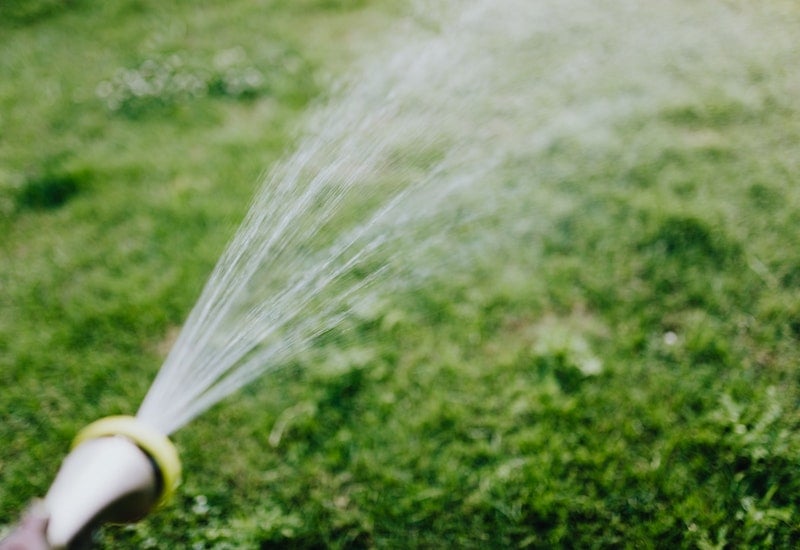
Summer in Connecticut may be brutal, and your lawn needs additional water to stay cool. Watering is essential, but do it intelligently! Aim for at least an inch of water every week. Watering early in the morning is especially important in summer when the scorching sun will evaporate most water applied after 10 a.m. Remember to adjust your sprinklers for even coverage and to avoid wasting water on sidewalks and roads.
Keep in mind water constraints and local laws in summer in Connecticut and water accordingly.
Watering should be kept to a minimum if your lawn goes dormant and stops growing. Your dormant lawn won’t use the water, but weeds will drink it right up and set to taking over your lawn while it’s vulnerable.
Mow Wisely
Hot weather necessitates a change in your mowing regimen. Increase the cutting height on your mower and allow the grass to grow taller to give shade to the soil and preserve the cool-season grass from scorching. Taller grass retains moisture and inhibits weed growth. It also offers a lush look to your grass.
To avoid clumping, mow only when the grass is dry. Also, if it’s too hot outside, give yourself and your lawn a rest and postpone mowing until the weather cools. Just like mowing in extremely hot weather can be stressful and tiring for your body, it can be stressful for your cool-season grass.
Stay Alert Against Weeds
If weeds still pop up in your lawn even after using pre-emergent herbicides in spring, you can eliminate them by utilizing post-emergent herbicides that are specifically formulated to kill the type of weeds you’re dealing with.
Remember to follow the directions and wear protective equipment when applying herbicides.
Early Fall Lawn Care (September – Mid-October)
As the leaves begin to change and the air becomes crisper, it’s time to switch to early fall lawn care in Connecticut. September and October are the months when the temperature is between 40° F and 55° F, and cool-season grasses are growing most actively. It is also the best time to establish a new lawn in Connecticut.
So, let’s get started on some crucial early fall lawn care techniques to keep your grass growing and ready for the coming winter.
Plant New Seeds

Clear the debris from your lawn and set up your lawn for seeding new grass. Plant cool-season grass in your lawn no later than 45 days before the estimated date of the first frost.
These grasses germinate well when the soil temperature is 50 to 60 degrees Fahrenheit, usually in early fall. You can learn more about timing your grass planting by going through our guide on when to plant grass seed in Connecticut.
Mow Vigilantly
Early fall is when the grass in Connecticut grows most actively, which means you need to step up your mowing game. Lower your mower’s height and sharpen your mower blades. Cut your grass to its ideal height mentioned in the table below. Never cut lower than the prescribed height because if cut too short, grass becomes vulnerable to damage during the upcoming winter.
| Grass Type | Recommended Mowing Height | Recommended Mowing Frequency Per Week |
| Kentucky bluegrass | 2.5 to 3.5 inches | 1 |
| Perennial ryegrass | 1.5 to 2.5 inches | 1 |
| Tall fescue | 2 to 3 inches | 1-2 |
| Fine fescue | 2 to 3 inches | 1-2 |
Remember the one-third rule: Never cut your grass more than one-third of its total height. Cutting off too much at once can weaken the grass and make it harder for it to recover.
Lawn Fertilization
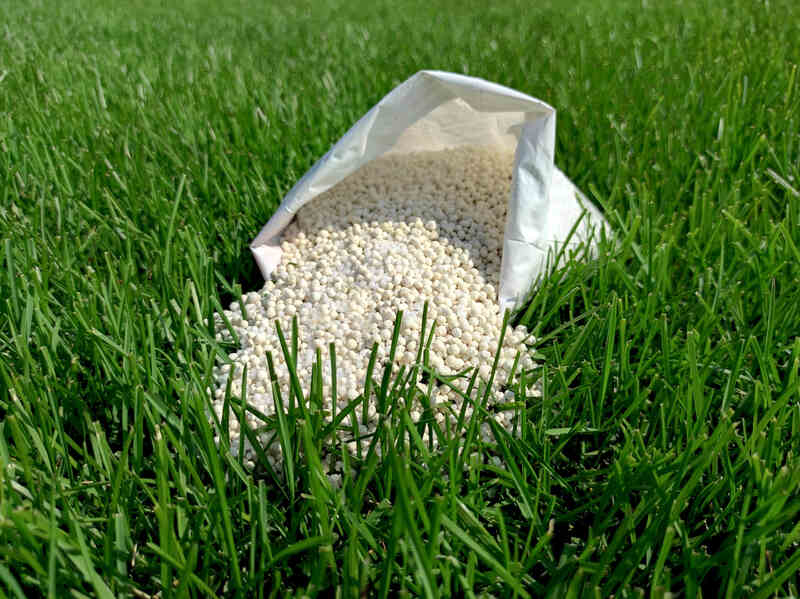
A healthy cool-season lawn usually requires at least one fertilizer application every year, which should be done in early fall. The grass is growing actively, requiring proper nutrients to fulfill growth requirements. It is the best time to apply a slow-release, high-nitrogen fertilizer. It will give vital nutrients for root development and boost the grass for the upcoming winter months.
Make sure to apply the fertilizer uniformly and at the recommended dosage as per your soil test results. Learn more about the proper fertilization schedule from our guide, When to Fertilize Your Lawn.
Weed Control – Prevent Unwanted Visitors
Early fall is an ideal time for weed control. Winter annual weed seeds tend to germinate in fall, but you can catch them beforehand by applying pre-emergent herbicide to keep winter weeds from ever popping out of the ground.
Spot-treat any remaining weeds with a selective herbicide, or for smaller areas, employ a manual approach such as hand-pulling. You can use post-emergent herbicides for treating already-sprouted weeds in your lawn, too.
Aeration
In the early fall, aerate your lawn to revitalize it. This active growth period is when the grass can handle the stress caused by aeration. Aeration loosens compacted soil, making it easier for oxygen, water, and nutrients to reach the roots. This technique also helps with seed germination. It works by punching holes in the soil to physically create more space.
You can either rent a plug aerator or hire a professional to aerate your lawn. Most lawns will only need this service once every 2 – 3 years, but yards with especially compacted soil will benefit from aeration every fall.
Overseed Your Lawn
After aerating your lawn, boost it by overseeding in early fall, at least 45 days before the first frost in Connecticut. Identify any bare or thin patches of grass and overseed your lawn by applying cool-season grass seeds like perennial ryegrass or Kentucky bluegrass. Rake the seed gently into the soil and keep it moist until it germinates. This will fill the gaps and give your lawn a lovely, consistent texture.
Water Regularly
During the early fall, water your lawn regularly. Although summer is over, hydration is still required to sustain root growth during this active growth season. Keep an eye on the weather and change your watering plan as needed. Water at least 1-2 inches, once a week, early in the morning, preferably between 4 a.m. and 10 a.m.
You can also manage your watering schedule by installing an automatic sprinkler system.
Reduce Foot Traffic
Your grass, like all of us, requires a break. As the grass grows, it becomes more delicate and vulnerable to damage. So, strive to keep foot traffic and heavy activity to a minimum during the growth period. By lowering the stress on your grass, you are allowing it to grow strong and healthy in preparation for the colder weather ahead.
Late Fall Lawn Care (Late October – November)
As November is about to arrive, it’s time to concentrate on late fall lawn care and prepare your grass for the long Northeast winter ahead.
Remove Fallen Leaves
Late October and November bring plenty of falling leaves, so keep your yard free of clutter. Remove leaves from your yard regularly with a rake or leaf blower to avoid soil congestion. You can compost those leaves to create nutrient-rich organic mulch for your plants, which will help insulate them from the cold of winter.
Dethatch Your Lawn
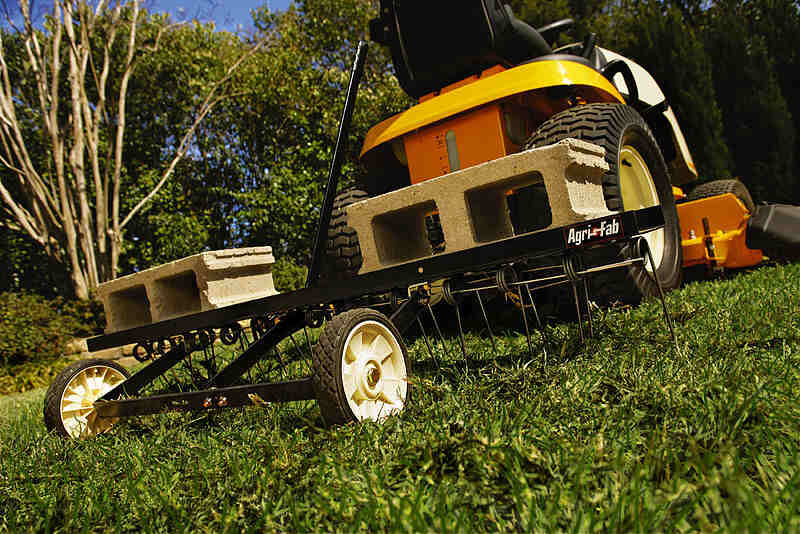
Thatch is a layer of dead grass and other organic materials that form on the soil’s surface. It can potentially restrict air, water, and nutrients from reaching the grass’s roots. Dethatch your lawn in the fall to remove thatch that has become thicker than ¾ inch.
Keep Mowing – Gradually Reduce the Height
To help your lawn prepare for winter in Connecticut, gradually lower the cutting height of your mower as the growth rate slows in late October. Mow the grass slightly shorter than normal, but do not scalp it. Scalping can cause lawn damage and make the grass more susceptible to winter stress.
Light Fertilization for a Winter Boost
Late October is an excellent time for a modest fertilizer treatment to offer critical nutrients to your Connecticut lawn before winter arrives. Use a winterizing fertilizer made exclusively for cool-season grasses and apply the prescribed quantity. This late feeding fortifies the grass, increases its cold resistance, and provides a strong start in the spring.
Shop Winterizing Fertilizer: Green Thumb Winterizer Lawn Fertilizer
Stay Ahead of Winter Annual Weeds with Weed Control
To prevent winter annual weed seeds from germinating in your Connecticut lawn, apply pre-emergent herbicides in late fall. It will help you maintain a weed-free lawn through the winter ahead.
Reduce Watering
Start to reduce your lawn watering frequency as the temperatures drop. When it gets close to winter, and your grass goes dormant, start watering more infrequently but deeply, around 4-6 inches. It helps to avoid any diseases and pest infestation on your lawn.
Repair and Reseed – Fill in the Gaps
Late fall is the last chance to repair any barren spots or thin patches in your Connecticut lawn. You still have time to overseed your lawn before the winter frost. Lightly water and keep newly sown areas moist until the ground freezes. It will encourage germination and yield denser, healthier grass the following year.
Winter Lawn Care (December – February)
As winters in Connecticut are really harsh, winter lawn care is mostly about knowing what not to do. You shouldn’t do any regular maintenance like watering, fertilizing, mowing, or weed and pest control applications during winter because your grass is dormant.
Instead, you should be gentle on your grass during this time and take care of it in the following ways while it’s dormant.
Stop Mowing
When the grass is dormant, stop mowing it. For one thing, there’s no reason to cut grass that’s stopped growing. For another, cutting dormant grass can cause it to become stressed and grow weak, which will make it more vulnerable to things like winter lawn diseases.
Don’t Walk on the Lawn

Try to minimize walking or driving on the lawn during the winter, especially when there’s ice on the ground. The grass is more susceptible to damage when it’s frozen, and foot traffic can cause soil compaction and stress on the grass, leading to potential turf injury or thinning.
Clear Snow Regularly
Keep clearing the snow from your lawn throughout winter so your turf doesn’t get suffocated underneath it. Snow buildup can also cause the fungal disease snow mold.
However, refrain from using heavy equipment like snow blowers or snow plows on your lawn because they can damage your grass.
FAQ
The optimal time to fertilize cool-season grass found in Connecticut is in the early fall, around September. It enables the grass to absorb and store nutrients before winter, promoting healthy root development. You can also fertilize your lawn when the grass greens up in spring.
Once the grass stops growing in early winter, give it one last mow before the first frost.
During the summer, it’s best to water your lawn deeply once or twice a week, supplying about an inch of water. However, your watering plan should be adjusted based on rainfall, temperature, and the individual demands of your grass. Always water in the early morning to reduce evaporation.
Aeration is excellent for Connecticut lawns, particularly if the soil is compacted or shows signs of poor drainage. Aerating cool-season grasses in the fall is ideal. A core aerator can be rented and used to remove small plugs of dirt from your lawn, allowing for increased air, water, and nutrient penetration to the root system.
Kentucky bluegrass, fine fescue, perennial ryegrass, and tall fescue are prevalent cool-season grasses in Connecticut. These grasses are climate-adapted and can tolerate the region’s severe weather. Learn more about these grasses from our article on the best grass seed for Connecticut.
Final Thoughts
Lawn maintenance is essential if you want your lawn to look lush and healthy. In Connecticut, you can have a dream lawn if you follow our lawn care schedule. But if it’s difficult for you to maintain the lawn yourself, you can ask for help from a pro near you.
Our lawn care professionals in Connecticut are available to help you with all your lawn chores. Connect with a local pro through LawnStarter today and get a quote for lawn services, whether you’re a resident of Hartford, New Haven, Stamford, Bridgeport, or anywhere else in the Constitution State.
Main Image Credit: Joe Mabel / Wikimedia Commons / CC BY-SA 3.0

